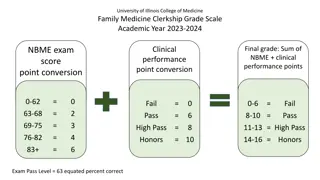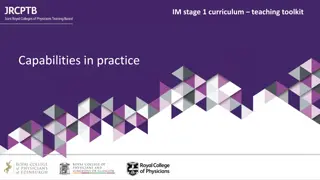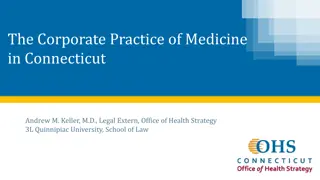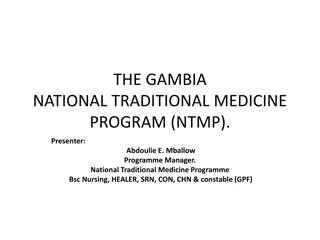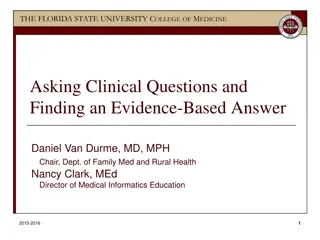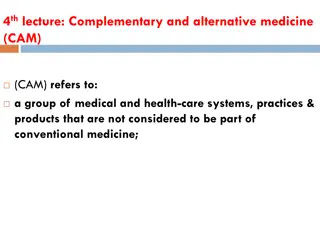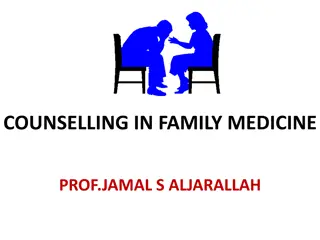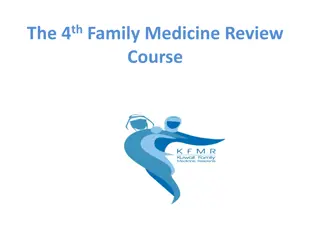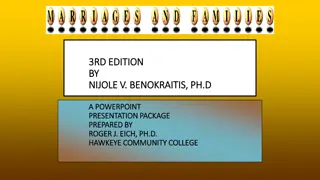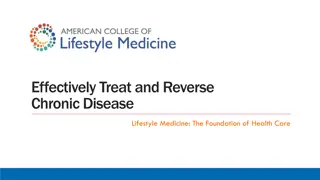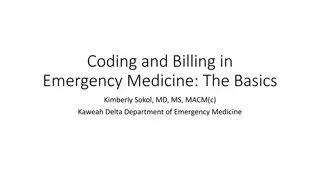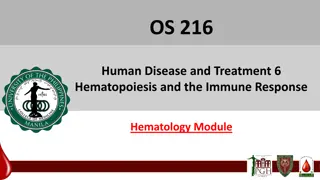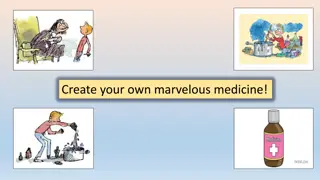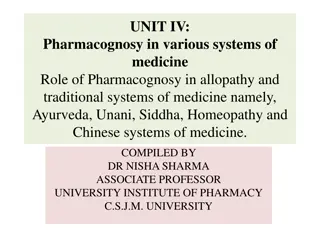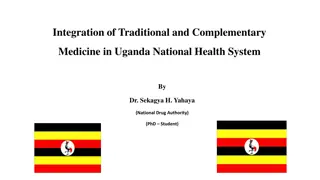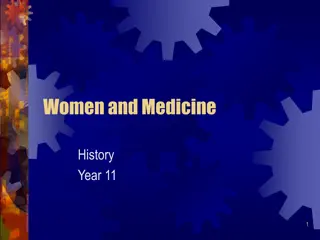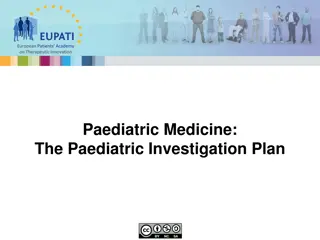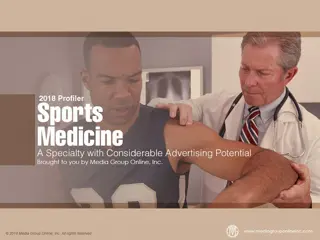Understanding Somatization in Family Medicine
Somatization is a prevalent human experience with significant impact on healthcare resources. Dr. Jon Davine explores the complexities of somatoform disorders, their implications on medical budgets, and the challenges faced by primary care practitioners in diagnosing and treating patients with unexplained somatic complaints.
Download Presentation

Please find below an Image/Link to download the presentation.
The content on the website is provided AS IS for your information and personal use only. It may not be sold, licensed, or shared on other websites without obtaining consent from the author. Download presentation by click this link. If you encounter any issues during the download, it is possible that the publisher has removed the file from their server.
E N D
Presentation Transcript
Somatizing: What Every Family Physician Need to Know! Dr. Jon Davine
Presenter Disclosure Presenter: Dr. Jon Davine Relationships with financial sponsors: Any direct financial relationships, including receipt of honoraria: Ontario College of Family Physicians, Touchstone Institute, McMaster University Continuing Education, CMEAway by Sea Courses, Pri-Med Canada/Humber River Hospital, University of Ottawa Dermatology, Peterborough FHT, Kitchener Waterloo Family Medicine Membership on advisory boards or speakers bureaus: NO Patents for drugs or devices: NO Other: CAMH---Co-Editor of book, Psychiatry in Primary Care , Ontario Psychiatric Association--- Treasurer
Disclosure of Financial Support This program has NOT received financial support This program has NOT received in-kind support Potential for conflict(s) of interest: Dr. Jon Davine has NOT received funding for this program
For each ailment that doctors cure with medications (as I am told they do occasionally succeed in doing), they produce ten others in healthy individuals by inoculating them with that pathogenic agent a thousand times more virulent than all the microbes - the idea that they are ill. - Marcel Proust (le cote de guermantes)
Objectives Appreciate the range of diagnoses that make up Somatic Symptom and Related Disorders (DSM-V) Understand the range of conscious and unconscious mechanisms involved in these disorders. Describe treatment modalities for these disorders both psychopharmacolgic and psychotherapeutic. 1. 2. 3.
Straw Poll Who thinks they have somatized in their life?
Introduction Somatizing is a very common human experience 80% of us have somatic sensations in any week If this becomes primary mode of behaving, this becomes a somatoform disorder Estimated that somatoform disorders may cost 10- 20% of medical budgets in USA 10-30% of patients with somatic complaints that present to primary care practitioners, have no adequate physical cause to explain the complaint
Somatization Lipowski (1988) The tendency to experience and communicate somatic distress and symptoms; unaccounted for by pathological findings, to attribute them to physical illness, and to seek medical help for them , this tendency becomes manifest in response to psychosocial stress
Shared Care Important Primary care practitioners well placed to treat somatizing About 50% of patients refuse referral to mental health services But 81% of MUS patients were willing to have psychosocial treatment from their primary care practitioner The buck stops here!
Mind-Body Link Examples of mind-body link Tension headache Butterflies in the stomach Tension chest-ache Tension leg-ache Tension __ Important to acknowledge patient s symptoms your pain is real, it is not imagined, and it s not in your head We simply know that stress can play a role in producing these symptoms
Mind-Body Link Hardware vs. Software Stressed brain, therefore software not working properly, hardware remains intact Symptoms are based on complex brain processes, not brain or tissue pathology
Three Forms of Somatizing Medically unexplained symptoms (MUS) Hypochondriacal somatization Bodily preoccupation and worry about having a serious illness Somatic presentations of psychiatric disorders e.g. Depression, Panic Kirmayer and Robbins 91
Somatization Unconscious-DSM-V Somatic Symptom Disorder Functional Neurologic Symptom Disorder (Conversion Disorder) Illness Anxiety Disorder (Hypochondriasis) Body Dysmorphic Disorder (OCD Disorder) Delusional Disorder, somatic type
Somatic Symptom Disorder One or more somatic symptoms which distress and disrupt life Excessive thoughts, feelings or behaviours related to these somatic symptoms Symptoms persist for more than six months Specifiers: With predominant pain (previously pain disorder) Persistent (severe symptoms, >6 months) Mild Moderate Severe
Somatic Symptom Disorder Along with pain, typically, this will also include GI disturbance and fatigue.
Functional Neurologic Symptom Disorder(Conversion Disorder) Affects voluntary motor or sensory function. Linked to psychological stressors. Specify: With weakness or paralysis With abnormal movement With swallowing symptoms With speech symptoms With attacks or seizures With anesthesia or sensory loss With special sesnory symptoms With mixed symptoms
Conversion Disorder - Characterization Usually acute onset Symptom duration is often relatively brief, usually within two weeks if stressor is removed or addressed Otherwise, may go on for . Few studies on course of illness
Conversion Disorder Medication Meds not necessary For patients able to identify psychological stressors, appropriate psychotherapy can be very helpful
Somatic Symptom Disorder with predominant pain Associated with psychological factors. Associated with both psychological factors and a general medical condition. Pain disorder associated with a general medical condition (not a psychiatric diagnosis).
Somatic Symptom Disorder with predominant pain Perhaps 40% of pain patients may be psychologically amplified Usually in fourth or fifth decades Females > Males 2:1
Somatic Symptom Disorder with predominant pain Treatment Options Muscle relaxation techniques Psychotherapy/Behavioural Activation Medication
Somatic Symptom Disorder with predominant pain Psychotherapy CBT Challenge cognitions This pain is not damaging my body I can continue activities, even in some mild pain. I don t have to stop. Behaviorally activate: e.g. gardening 15 minutes twice/week, then increase
Somatic Symptom Disorder with predominant pain - Medication Try antidepressants, e.g. Nortriptyline or Amitriptyline at doses of 10-50 mg po qhs These can help pain and possible sleep Try Trazodone 25-50 mg po qhs for sleep
Somatic Symptom Disorder with predominant pain, if neuropathic or herpetic neuralgia Duloxetine, Pregabalin, Gabapentin Venlafaxine was equal to Duloxetine Recommended against tricyclics (Falk J, et al, Can. Fam. Physician 2021)
Pincus,T. et al. Cochrane Database, May 10, 2023 Meta-analysis, 176 RCT s, about 30,000 patients Looked at fibromyalgia, nerve pain, MSK pain All antidepressants, except Duloxetine, lack sufficient evidence for efficacy and safety Duloxetine 60 mg. once daily had small to moderate effect. No evidence that higher dose added benefits
Somatic Symptom Disorder Persistent At least six (6) months One (1) or more physical complaint Specify if: persistent mild, moderate or severe
Somatic Symptom Disorder, persistent Chronic fatigue syndrome, Fibromyalgia, Irritable Bowel Syndrome Has never been shown thus far to have a biological cause In studies, there is felt to be a major psychiatric co- morbidity Try not to dichotomize: Perhaps a % of both, thus may work on psychological side to see how far this takes us.
Somatic Symptom Disorder, persistent ?LONG COVID ?LYME DISEASE
Illness Anxiety Disorder (Hypochondriasis) Preoccupation with having a serious illness Somatic symptoms are not present or only mild
Illness Anxiety Disorder (Hypochondriasis) Treatment Literature discusses link to OCD spectrum E.g., intrusive thoughts, repetitive checking behaviours Would then use CBT and OCD medication May evolve into overvalued ideas, and ultimately delusions Delusional disorder, somatic type Would then use neuroleptics
Illness Anxiety Disorder (Hypochondriasis) Treatment Efficacy Recent RCT compared CBT and paroxetine to placebo In the intent to treat analysis, only CBT differed significantly from placebo In the completed analysis, both paroxetine and CBT differed significantly from placebo (Greeven et al, Am J of Psych 07)
Case Betty 32 year old woman Mother had breast cancer Her own fears
Body Dysmorphic Disorder (BDD) - Definition Preoccupation with an imagined defect in appearance If a slight anomaly is present, concern is markedly excessive
BDD - Epidemiology Prevalence: Dermatology Clinic: 12% of patients had BDD (Phillips 00) Cosmetic Surgery Clinic: 6-8% (Sarven et al, 98) General Population: Male:female 1:1 Usually starts in Adolescence (Phillips et al 97) 0.7% (Faravelli 97) 1.1% (Bienvenu et al, 00) 2.2% (Mayville 99) 13% (Bibby 98)
BDD Characteristics Can resemble OCD, link with obsessive spectrum disorders. Think about flaws 3-8 hours per day (Phillips 96) Compulsive behaviours - checking appearance, grooming, seeking reassurance repetitively, may repetitively seek surgery. Can go on to overvalued ideas and frank delusions.
Case 40 s year old woman Concerns about face that is horrible, looks like a monster
BDD- Tx 100 people treated x 14 weeks with escitalopram (open label) 81% of completers responded 67% of treated subjects responded (including dropouts) Thus, significant response to meds (Phillips et al, Am. J of Psych, Sept. 2016)
BDD--Tx 58 responders then randomized to continued treatment with escitalopram vs. placebo for 6 months (RCT) 18% relapsed with escitalopram, 40% with placebo Time to relapse was longer with escitalopram 36% of citalopram subjects showed continued improvement over the 6 months Thus effective, and may want to continue treatment for at least 6 months (Phillips, et al, Am. J of Psych, Sept. 2016)
BDD - Screening Suggest to plastics, dermatology clinics (and to primary care practitioners) How do you feel this is affecting your life? How do you feel the procedure will help you?
Somatizing Conscious Factitious Disorder (Munchausen s Syndrome) Malingering
Malingering Consciously done Easily identifiable goals drugs, money, legal issues Link to Anti-Social Personality Disorder
Factitious Disorder Imposed on Self Intentional production or feigning of physical or psychological signs or symptoms The motivation for the disorder is to assume the sick role External incentives for the behaviour (such as economic gain, avoiding legal responsibility, or improving physical well-being as in malingering are absent
Factitious Disorders Imposed on Self Common Presentations Infection (can be fatal septicemia) Impaired wound healing Bleeding Hypoglycemia Seizures Rashes Fever (flu) Connective tissue disease Vomiting, diarrhea (Feldman et al 94)
Fictitious Disorder Imposed on Self Conscious Part Either: Lying or exaggerating signs and symptoms Knowingly tampering with samples or tests Manipulation of ones body to produce positive tests results
The Spectrum Conversion Disorder Pain due to Psychological factors Somatization Disorder Factitious Disorder Malingering Unconscious Conscious (Adapted from Nadelson et al., 1979)
Factitious Disorder Imposed on Self Gently confront Overall prognosis is poor Few admitted Very few pursue any psychotherapy
Factitious Disorder Imposed on Another Factitious Disorder (Munchausen) by proxy 90% of perpetrators are mothers Usually involves infants, toddlers Psychologically needs to assume the sick role, this time vicariously.
Somatization 20 to Psychiatric Illness Depression Panic Disorder (aka the great imitator ) Generalized Anxiety Disorder OCD Delusional Disorder, Somatic type
Assessment Appropriate medical work-up ( Boy who cried wolf ) Make a respectful mind-body link up early on








